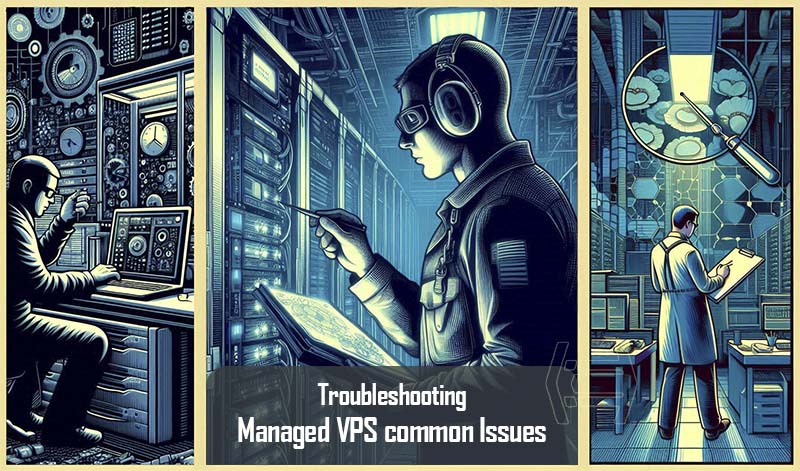At the forefront of modern computing, the virtual servers, commonly known as a VM, signify a paradigm shift in deploying and managing IT resources. Operating as a simulated computing environment within a physical server, it seamlessly executes multiple instances on the same hardware, maximizing resource utilization. Efficient resource utilization is a crucial advantage achieved through harnessing virtualization's power. This approach enables organizations to optimize hardware usage, fostering cost savings, energy efficiency, and a smaller environmental footprint. Beyond resource efficiency, deploying these servers enhances IT infrastructures' agility. This technology facilitates quick virtual machine deployment, simplifying scalability for organizations. Whether adapting to changing workloads, introducing new applications, or testing software configurations, VMs provide unparalleled agility compared to traditional infrastructure. In addition to deployment advantages, virtualization significantly improves resource optimization. Running multiple servers on a single physical server ensures optimal computing resource utilization, enhancing performance and promoting a lean, cost-effective IT ecosystem. Simplified management is a cornerstone of virtual server technology. Administrators efficiently oversee the entire virtualized environment through centralized interfaces and tools. Streamlined tasks such as provisioning, monitoring, and troubleshooting reduce administrative burdens, enhancing overall system reliability and contributing to a more robust IT infrastructure.

Jun 15, 2024
EngineeringWhile shared hosting can be a launchpad for many websites, VPS hosting for CMS becomes increasingly attractive as your website thrives and demands more. Here are some red flags that signal your shared hosting environment is reaching its limits and a VPS upgrade might be necessary:

Sharma bal

Jun 12, 2024
EngineeringWhile SSH offers robust security features, it's crucial to be aware of its potential weaknesses to ensure the most secure remote access environment. By understanding these disadvantages of SSH, we can take steps to mitigate them and leverage SSH even more effectively.

Sharma bal

Jun 9, 2024
EngineeringWhile both IDS and IPS offer distinct functionalities, their true strength lies in their synergistic relationship. An IDS provides the initial line of defense, identifying potential threats through its monitoring capabilities. The IPS then leverages this information to take preventive actions, effectively mitigating the risks associated with the detected threats. This combined approach offers a robust security posture for your network infrastructure.

Sharma bal

Jun 7, 2024
EngineeringAt its core, AI for CMS refers to the integration of artificial intelligence functionalities within content management systems. These functionalities can range from automating repetitive tasks to providing intelligent assistance for content creation, editing, and optimization. By leveraging AI, CMS platforms are evolving into powerful tools that can significantly enhance content creation efficiency, improve content quality, and drive better user engagement.

Sharma bal

Jun 3, 2024
EngineeringEvery millisecond of loading delay can have negative impact on user experience, your search rankings, and your sales. This is where troubleshooting managed VPS issues comes in, offering a powerful solution for businesses seeking to optimize their website's performance without breaking the bank.

Sharma bal

May 31, 2024
EngineeringImagine having a secure digital tunnel that allows you to access and manage your computer or server from anywhere in the world. That's the magic of SSH server, also known as Secure Shell. It's a powerful protocol that provides a secure and encrypted connection for remote login and command-line access to another machine.

Sharma bal

May 26, 2024
EngineeringWith a multitude of CMS options available, choosing the right one can be overwhelming. This guide dives deep into the top 5 best content management system software contenders in 2025, helping you make an informed decision based on your specific needs.

Sharma bal

May 24, 2024
Engineeringmagine this: you've spent countless hours building your website, meticulously crafting content, and attracting a loyal audience. Suddenly, disaster strikes! A hardware malfunction, a malicious cyberattack, or even accidental deletion – any of these scenarios can lead to data loss on your Windows VPS. Without a proper Windows VPS backup, all your hard work could vanish in an instant.

Sharma bal

May 20, 2024
EngineeringShared hosting is a cost-effective option for websites just starting out. However, as your website grows in traffic and complexity, its limitations become apparent. Let's delve deeper into these limitations and how a managed VPS plan can address them effectively...

Sharma bal

May 17, 2024
EngineeringUnlike a traditional forward proxy that sits in front of users and filters incoming requests, a reverse proxy sits in front of your web server and acts as a middleman. This intermediary role allows the reverse proxy to perform various tasks that can significantly improve website performance, including caching frequently accessed content.

Sharma bal

May 14, 2024
EngineeringVPS caching is a powerful technique that significantly improves website performance for sites hosted on a Virtual Private Server (VPS). Just like a superhero gathers information and uses it strategically, VPS caching stores frequently accessed data in a temporary location, making it readily available for future requests. This eliminates the need for your server to constantly retrieve the same data, resulting in lightning-fast loading times and a smoother user experience.

Sharma bal

May 12, 2024
EngineeringUnleash the Power: Break Free from Shared Hosting Limitations Your website is your castle in the ever-evolving digital landscape. It’s where you showcase your brand, connect with customers, and drive business growth. But as your website thrives, its needs evolve too. The limitations of shared hosting, the budget-friendly option you might have started with, can […]

Sharma bal